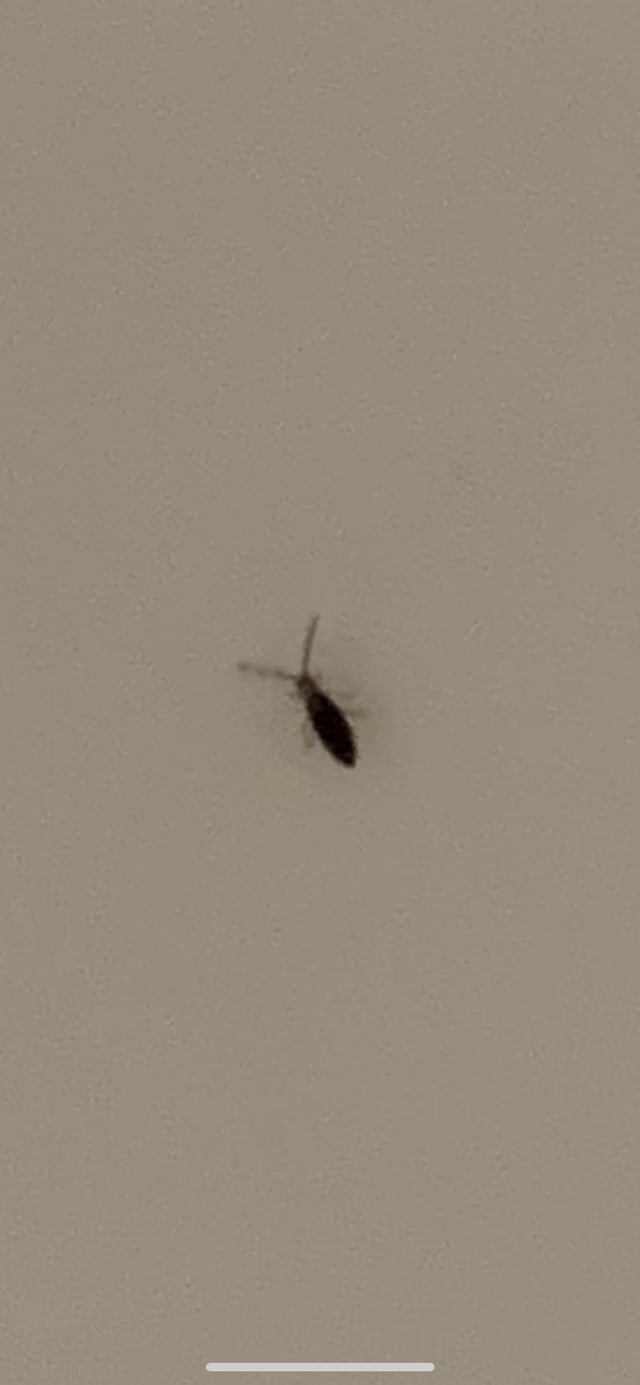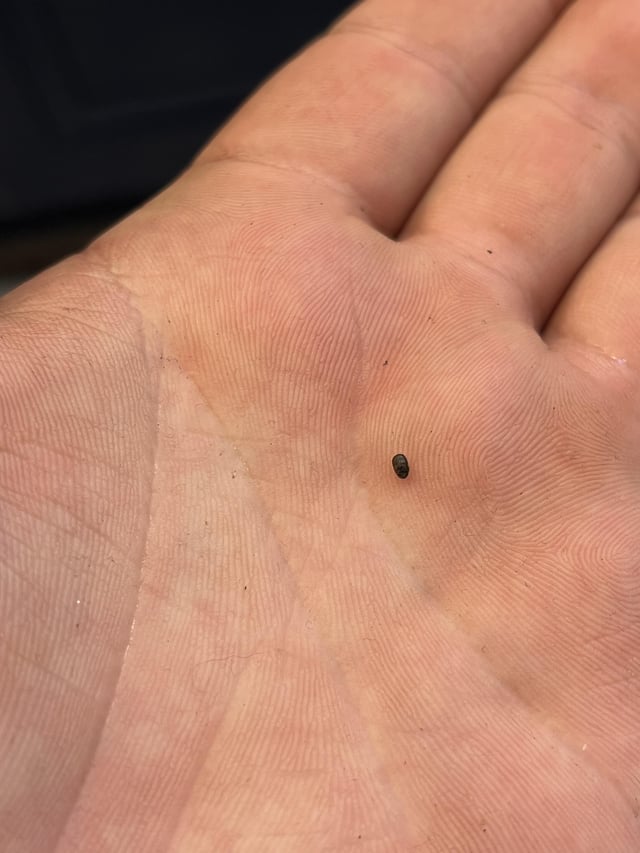Common Culprits
Several types of very small, dark-colored insects are commonly found in bathrooms, primarily attracted by the prevalent moisture and organic matter.
- Drain Flies (Psychodidae): Often described as tiny moths due to their fuzzy wings, these flies breed in the organic slime that accumulates in drains, S-traps, and overflow pipes. They are weak fliers and typically rest on walls near plumbing fixtures.
- Fungus Gnats (Sciaridae and Mycetophilidae): These delicate, dark, mosquito-like insects thrive in damp conditions and feed on fungi. In bathrooms, they may originate from overwatered houseplants, or from mold and mildew growing in persistently damp areas like shower stalls, leaky pipes, or condensation-prone surfaces.
- Springtails (Collembola): These minute, wingless insects are characterized by their ability to jump when disturbed, thanks to a spring-like appendage under their abdomen. They require high humidity and feed on mold, mildew, and decaying organic matter found in damp soil, grout, or under sinks.
- Booklice (Psocoptera): Tiny, soft-bodied insects (often less than 1-2mm) that can range from translucent to grey or dark brown. They feed on microscopic mold and fungi that grow in humid environments, often found on damp walls, wallpaper, or around plumbing.
Identifying the Source and Primary Causes
The presence of these pests invariably indicates an issue with excess moisture and available food sources within the bathroom environment.
- Excessive Moisture: This is the single most important factor. Sources include leaking pipes, dripping faucets, condensation on cool surfaces (toilets, pipes, walls), poorly ventilated shower areas, and consistently damp towels or bathmats.
- Organic Debris: Accumulations of hair, soap scum, skin cells, and other organic materials in drains, on shower floors, in grout lines, or hidden corners provide nourishment for these insects and their larvae.
- Mold and Mildew Growth: A direct consequence of high humidity and a primary food source for many of these tiny bugs, particularly fungus gnats and booklice.
Effective Eradication Strategies
A systematic approach focusing on eliminating conducive conditions is essential for successful and long-lasting control.

1. Reduce Moisture Levels:
- Promptly repair any leaks from faucets, showerheads, toilets, or pipes.
- Improve ventilation significantly. Use an exhaust fan during and for at least 30 minutes after showers or baths. If no fan is present, open a window.
- Wipe down condensation from surfaces like windows, mirrors, walls, and toilet tanks.
- Avoid leaving wet towels or bathmats on the floor for extended periods.
- In persistently humid climates or problematic bathrooms, a dehumidifier can be beneficial.
2. Eliminate Breeding Grounds and Food Sources:
- Thoroughly Clean Drains: This is often the primary breeding site for drain flies. Use a stiff drain brush to scrub the inside of drain pipes and remove physical debris. Regularly pour boiling water down drains to help break down grease and scum. If the problem persists, consider using an enzymatic drain cleaner formulated to break down organic matter, or a natural solution like a mixture of baking soda followed by white vinegar (let it fizz, then flush with hot water).
- Scrub all bathroom surfaces, including tiles, grout, shower enclosures, bathtubs, sinks, and around the base of the toilet, to remove soap scum, body oils, and any visible mold or mildew.
- Inspect and clean overflow drains in sinks and bathtubs.
- If potted plants are kept in the bathroom, ensure they are not overwatered and allow the soil surface to dry out between waterings to discourage fungus gnats.
3. Direct Pest Removal:
- Vacuum up visible adult insects using a crevice tool attachment. Dispose of the vacuum bag immediately outdoors.
- Sticky traps can be placed near drains or windows to capture adult flying insects and help monitor population levels.
4. Insecticides (Use as a Last Resort and with Caution):
- For persistent infestations after sanitation efforts, a pyrethrin-based aerosol insecticide labeled for use against flying or crawling insects in bathrooms can be applied according to label directions. Ensure proper ventilation and avoid direct contact with skin or inhalation. Focus on cracks, crevices, and areas where pests are seen. However, insecticides will not provide a long-term solution if the underlying moisture and sanitation issues are not addressed.
Preventative Measures
Maintaining an environment inhospitable to these pests is key to preventing future infestations.

- Regular Cleaning: Implement a consistent cleaning schedule that includes attention to drains, grout, and areas prone to moisture accumulation.
- Control Humidity: Continue to prioritize good ventilation and moisture reduction practices.
- Seal Entry Points: Caulk and seal any cracks or crevices in tiles, around pipes, windows, and baseboards to limit pest entry and harborage.
- Inspect Regularly: Periodically check common problem areas (drains, under sinks, damp corners) for early signs of pest activity or moisture issues.









